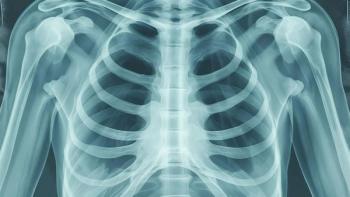
Here's Why BMI May Not Be the Best Indicator of Breast Cancer Outcomes
Determining body composition – a more nuanced approach to predicting survival outcomes in patients with breast cancer – may be a more accurate indicator than BMI, according to one study.
Body composition may be more important than body mass index (BMI) when it comes to predicting the impact that weight has on overall survival outcomes in patients with breast cancer.
Of note, oncologists use BMI as a method to predict survival outcomes in patients with breast cancer. In a recent study, it was found that despite higher rates of diabetes, high blood pressure and high cholesterol in blood, patients who were considered obese by BMI did not have a worse outcome than those who were considered overweight.
“We’ve really started to realize that (BMI doesn’t) necessarily tell us what we need to know, and that our approach needs to be more nuanced, that we need to dig a little deeper,” Dr. Colin E. Champ, associate professor of radiation oncology at Duke University Medical Center in Durham, North Carolina, and researcher on the study, said in an interview with CURE®. “And there (are) a bunch of data that (have) come out showing that more important than just someone’s weight on a scale is their body composition.”
Researchers looked at data from 1,027 women with stage 0 through 4 breast cancer and their available BMI information at the time they received their diagnosis. The data demonstrated that women who were overweight had the worst five-year overall survival rate (the amount of time a patient survives after receiving a diagnosis) compared with those considered normal or obese. Although there was a difference in overall survival for women who were considered normal weight (BMI 18.5 kg/m2-24.9 kg/m2), there was no significant difference between those who were overweight (BMI 25 kg/m2-29.9 kg/m2) and obese (BMI 30 kg/m2 and above).
“(Obesity) was not associated with a difference in overall survival. So that doesn’t mean one of those is good for you and one’s bad. To me, it really says that we need to take this nuanced look that it’s not simply a higher BMI is bad, a lower BMI is good,” Champ, who was an author on the study, explained. “There (are) other things going on here, and these are things we need to explore in other studies down the road.”
This is where the idea of an optimal body composition would come in, according to Champ. Using this concept, which focuses on higher muscle mass and less fat, could help oncologists to better predict who is at risk of worst survival outcomes. If survival outcomes were predicted based on this idea, Champ said, patients would likely receive body composition metrics by a DEXA scan, which can measure bone density, body fat percentage and muscle mass.
Rather than having a standardized scale for everyone, a patient’s body composition would help a physician base predictions on the patient’s body type, he noted. “We need to consider other things, too, because this is just simply taking someone’s height and someone’s weight to get the BMI, whereas you could have the same weight, but be two totally different body types. You can have a lot more muscle, you can have denser bones and weigh more than someone who doesn’t (have more muscle or denser bones), but (you could) actually be healthier,” Champ explained.
Although the best ways to achieve an optimal body composition would be to incorporate exercise and a hearty diet filled with nutrient-dense foods, Champ said that one of the most important questions is what’s the best diet and lifestyle for patients with breast cancer. “That’s the million-dollar question,” he said. “Scientists can sit in their labs and hypothesize whatever they want to hypothesize for 24 hours a day, but getting people to actually do it, the practice of it, is an entirely different issue.”
He added that incorporating exercise programs and nutritional recommendations after receiving body composition results might help patients work toward better survival outcomes.
In order to put these methods in place, however, Champ noted that there would need to be a larger clinical trial that follows patients to see if data from this association study and others were accurate and not just coincidences.
He concluded, “We need to, as a medical profession, put our money where our mouth is and start actually getting people healthier, making sure people stay healthier. So not simply saying, ‘Go on this diet, go do this exercise regimen,’ but (we should be) doing it in our own facilities, and insurance should actually be paying for it.”
For more news on cancer updates, research and education, don’t forget to




